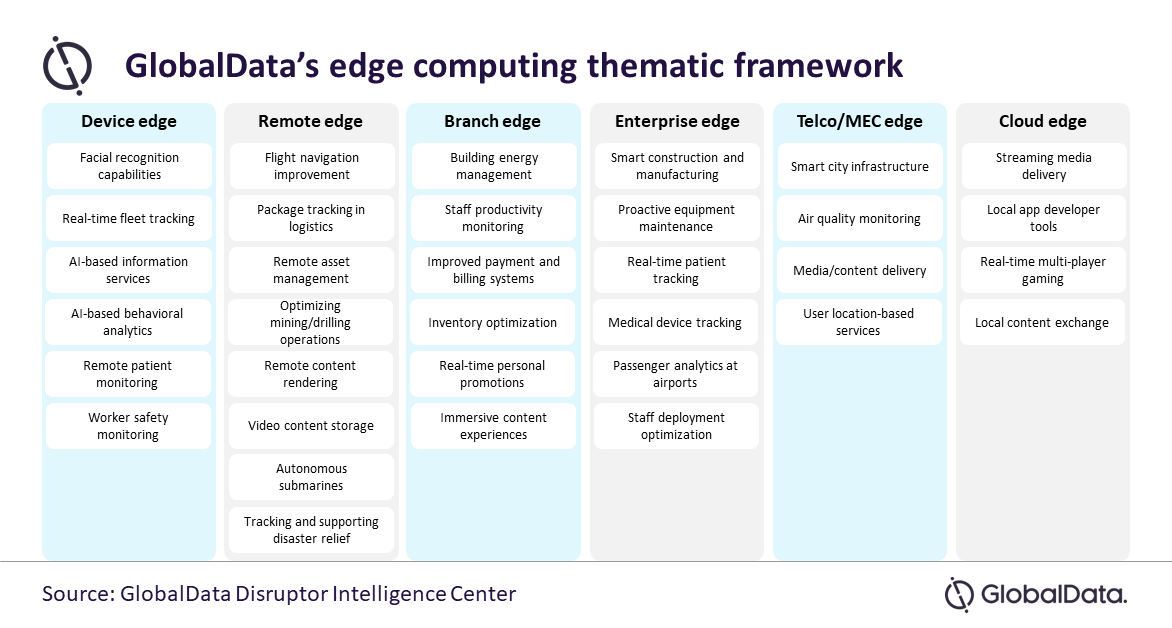
As the world recovers from the COVID-19 pandemic, the global internet of things (IoT) market is anticipated to surpass $1 trillion in 2024 in revenue where enterprise IoT could account for over 70% of the market share. Against the backdrop, edge computing holds a promise to dramatically improve data processing for mission-critical applications and accelerate the adoption of Industry 4.0, says GlobalData.
Kiran Raj, Practice Head of Disruptive Tech at GlobalData, comments: “Edge computing technology is the missing link of IoT as it processes data at the network edge instead of sending it back to the cloud or a data center, thus reducing the latency issue for businesses related to their internet and networking infrastructure impacted by the growing number of devices and data.”
Abhishek Paul Choudhury, Senior Disruptive Tech Analyst at GlobalData, comments: “When augmented with artificial intelligence (AI) and 5G capabilities, edge computing can provide an effective and efficient means to analyze data in real-time with minimum network latency and server failures. This can help businesses with enhanced privacy, security, scalability, and resiliency.”
GlobalData’s radar report, “Scaling at the edge: how edge computing is augmenting data processing,” highlights how edge computing is improving data processing in various sectors across the technology’s value chain.

Device edge
California’s technology startup Wistron AiEdge (Wistron) has created an artificial intelligence of things (AIoT) and data-driven fleet management platform “ZigFleet” that enables managers to efficiently monitor and manage fleets. It also helps reduce auto accidents, mentors inexperienced drivers in new areas, and optimizes fleet routes. This can offer businesses optimum productivity and profitability while being more environmentally friendly in terms of energy use and carbon emissions.
Remote edge
Israel-based telecom access solutions company RAD has developed an industrial internet of things (IIoT) gateway “SecFlow” for remote end-to-end (E2E) asset monitoring. SecFlow’s edge computing capabilities enable local data processing by assets with numerous sensors instead of using a centralized control system. This allows flexibility in functioning while reducing equipment costs and space requirements.
Telco/MEC edge
Dubai Integrated Economic Zones Authority (DIEZ) collaborated with the UAE’s telecom giant “du” and US-based software development startup Derq to develop smart city solutions. They aim to collect and combine data from IoT traffic cameras and sensors to execute real-time edge analytics while enabling infrastructure perception. This can enable vehicle-to-everything (V2X) or 5G applications, actionable traffic, and safety insights to build effective urban organizations and systems that can enhance the quality of life.
Choudhury concludes: “Edge computing is set to disrupt many sectors in the Industry 4.0 era with its cutting-edge capabilities. It is safe to assume that the technology will aid in the better management and analysis of data while significantly increasing the value of IoT efforts. Subsequently, more use cases will emerge as the technology matures further.”






